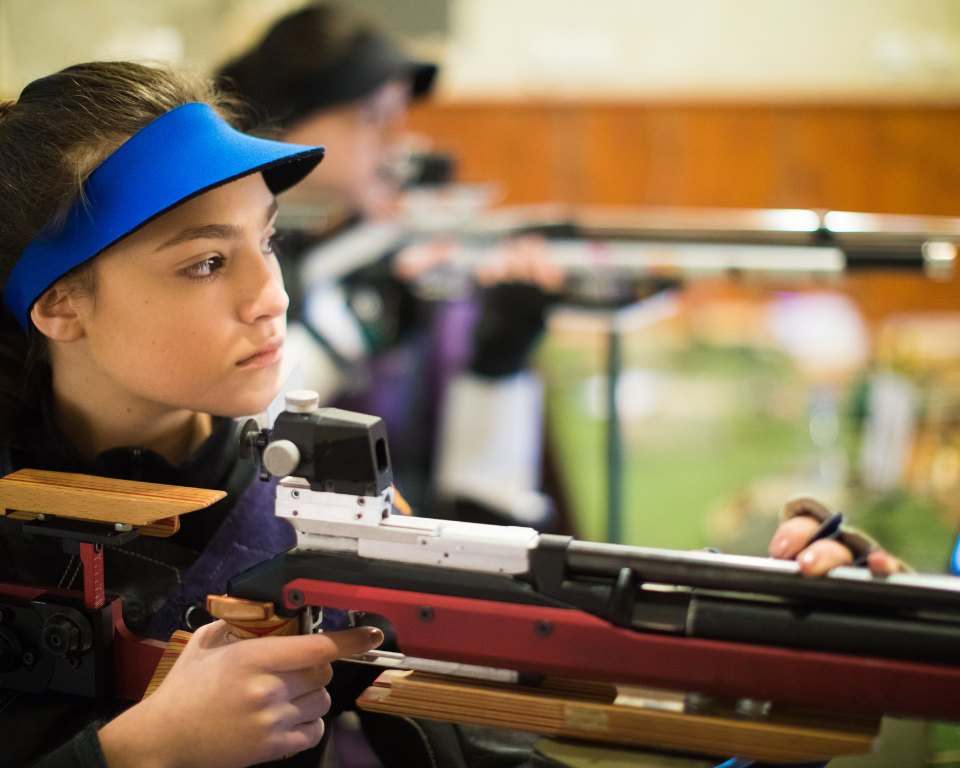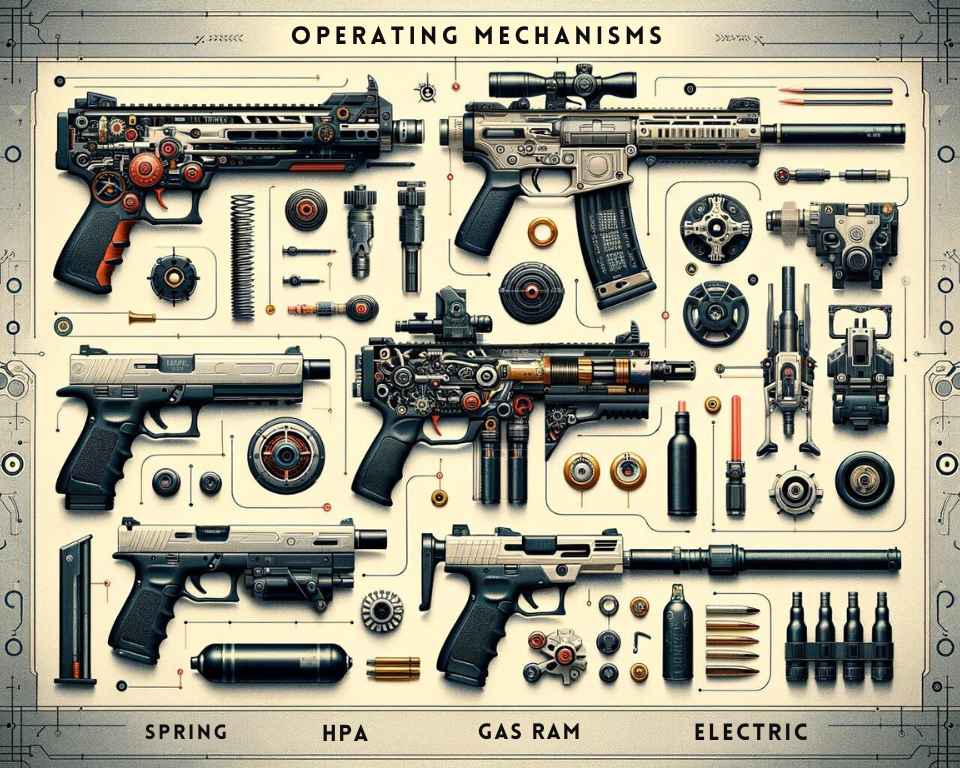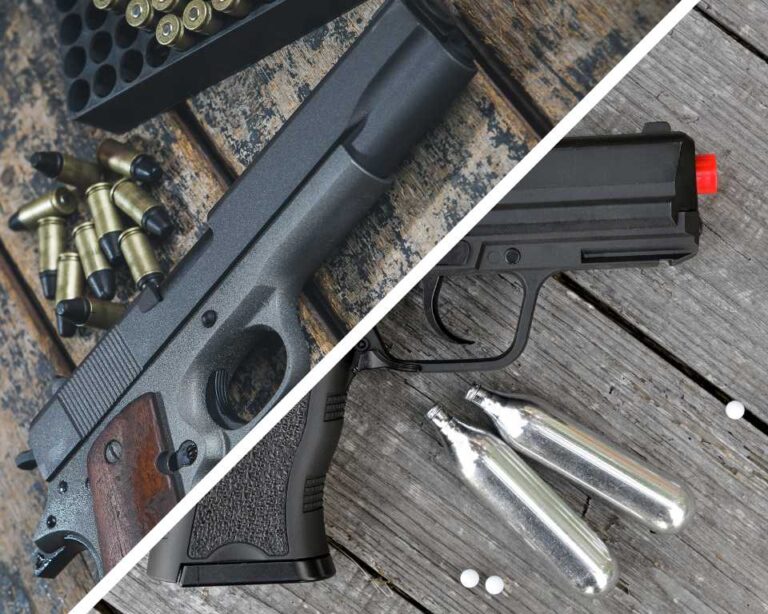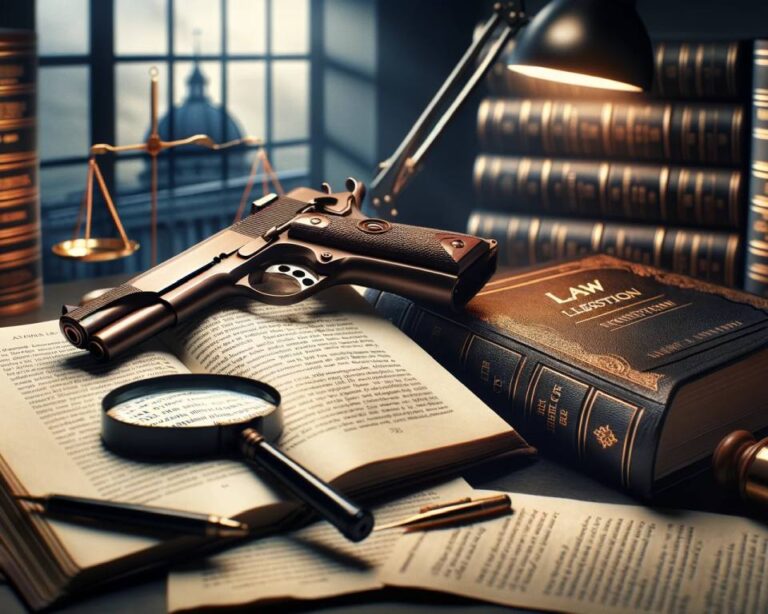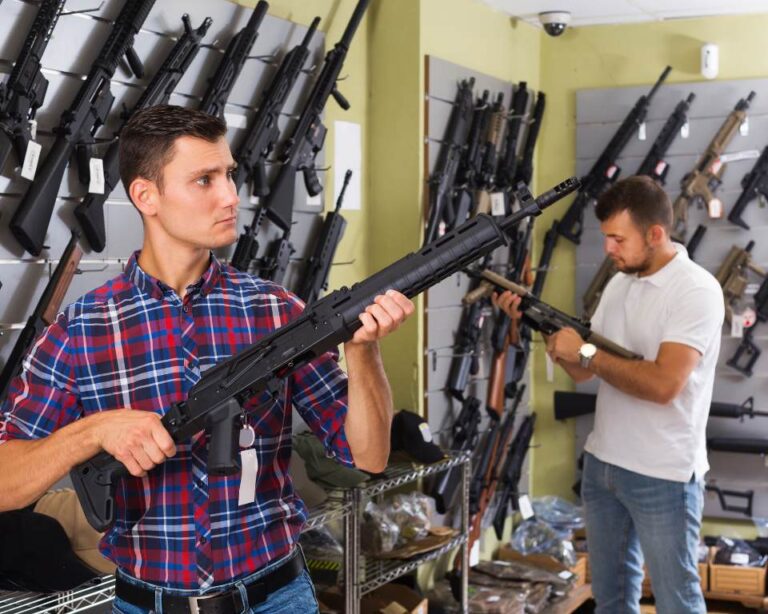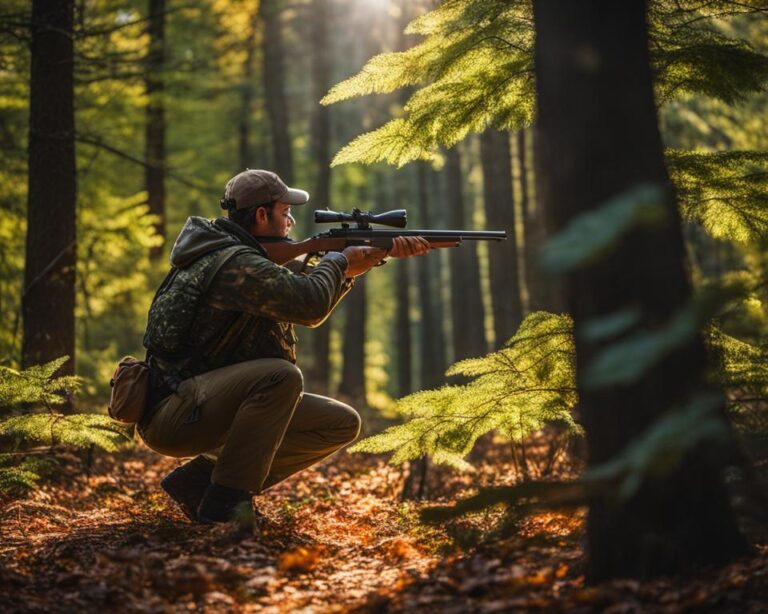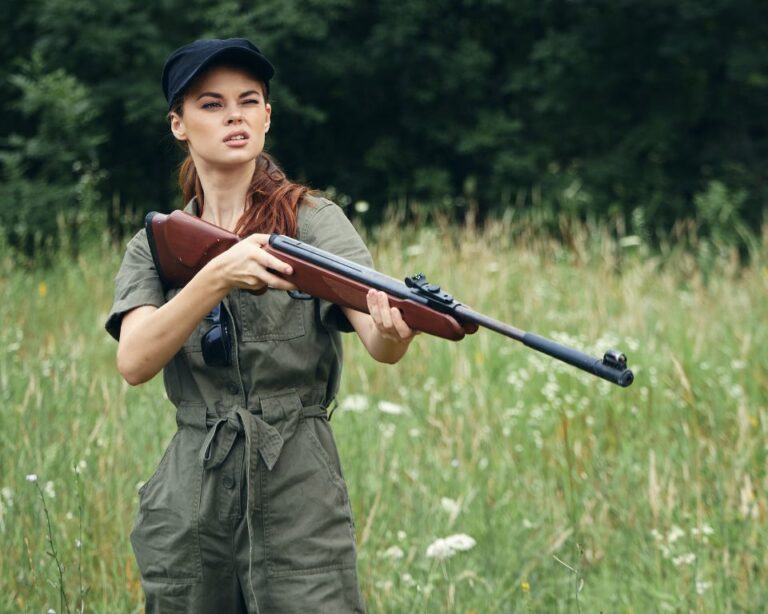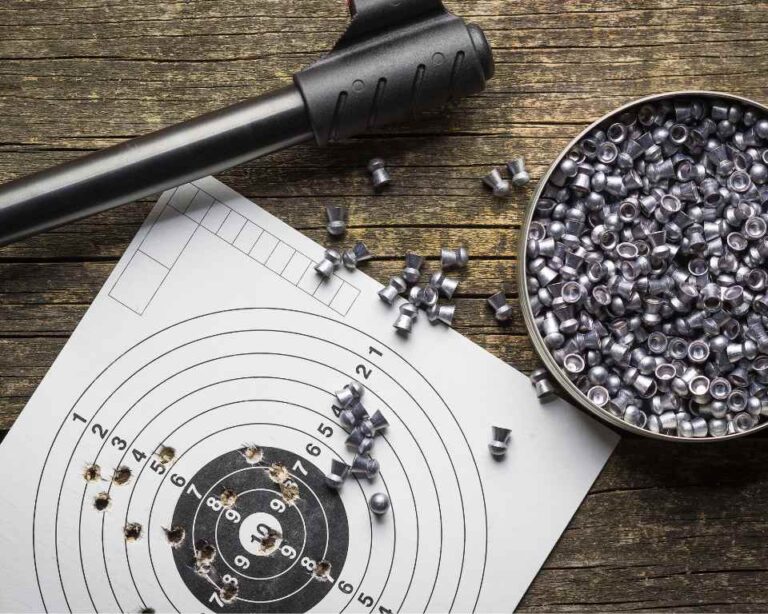Airguns in Recreation and Sport: From Airsoft to Precision Shooting
Welcome to our comprehensive guide on airguns in recreation and sport! Whether you are a seasoned enthusiast or just getting started, we have all the information you need to understand the world of airguns and their role in various shooting sports. From the popular airsoft games to precision shooting, we will explore the different types of airguns, their operating mechanisms, ammunition, power regulations, accuracy, cost, and much more. Additionally, we’ll discuss the essential accessories that enhance the overall shooting experience. So, let’s dive in and discover the exciting world of airguns in sports!
Key Takeaways:
- Airguns and airsoft guns are used for different purposes, with airguns being utilized in target shooting, competitive sports, and small game hunting.
- Airsoft guns shoot plastic BBs, while airguns propel metal pellets.
- Airgun operating mechanisms include spring-piston, HPA, CO2, gas ram, and electric.
- Airsoft guns use small plastic BBs, while airguns utilize metal BBs or pellets.
- Power regulations govern the muzzle energy of airsoft guns and airguns to ensure safety and prevent misuse.
Understanding the Difference: Airsoft vs. Airguns
Airsoft guns and airguns may appear similar, but they each have distinct characteristics that set them apart. Let’s explore the key differences between these two types of firearms.
Airsoft Guns
Airsoft guns are designed to mimic real firearms. They shoot plastic BBs and are commonly used for competitive games and target shooting. In the United Kingdom, airsoft guns are classified as toys with limited power to ensure safety and prevent serious injury. They provide an exciting and immersive experience, allowing enthusiasts to engage in realistic scenarios while minimizing the risk of harm.
Airguns
Airguns, on the other hand, are a broader category that includes both air pistols and air rifles. These firearms propel metal pellets using compressed gas or air. Airguns offer a wider range of applications, including target shooting, competitive sports, pest control, and small game hunting. They provide varying power levels and shooting capabilities, allowing users to tailor their firearms to their specific needs.
The Distinctions
It’s important to note that while airsoft guns are intended for recreational purposes and treated as toys, airguns are considered firearms and have legal regulations governing their ownership and use. Additionally, airguns offer more power and versatility, making them suitable for a wider range of activities beyond recreational games.
“Airsoft guns and airguns may appear similar, but they each have distinct characteristics that set them apart.”
Understanding the differences between airsoft guns and airguns is essential for individuals looking to participate in shooting sports or recreational activities. Whether you’re interested in competitive games or pursuing small game hunting as a hobby, knowing which type of firearm suits your needs will ensure an enjoyable and safe experience.
Operating Mechanisms: Spring, HPA, CO2, Gas Ram, and Electric
When it comes to airguns and airsoft guns, understanding their operating mechanisms is essential. Different mechanisms power these recreational weapons, each with its own unique advantages and applications.
1. Spring-piston
The spring-piston mechanism is commonly used in both airguns and airsoft guns. Compressed springs generate blasts of air, propelling projectiles forward. This mechanism is reliable and easy to maintain, making it a popular choice among enthusiasts.
2. HPA (High-Pressure Air)
HPA airsoft guns and PCP (Pre-Charged Pneumatic) airguns utilize refillable tanks of pressurized air. The compressed air is released to propel projectiles with precision and consistency. HPA mechanisms offer excellent performance and are favored by competitive shooters.
3. CO2 (Carbon Dioxide)
CO2-powered guns use disposable cartridges filled with compressed carbon dioxide to generate power. This mechanism is convenient and easy to use, making it popular for recreational shooting and training purposes.
4. Gas Ram
Gas ram airguns employ sealed units of nitrogen gas to provide power. When the trigger is pulled, the gas is released, propelling the pellets forward. Gas ram mechanisms offer smooth and consistent power delivery, enhancing accuracy and reducing recoil.
5. Electric
Electric-powered air weapons feature rechargeable batteries to drive their mechanisms. These guns often employ electric motors to compress air or operate internal mechanisms, ensuring consistent performance and ease of use.
Each operating mechanism has its own strengths and applications. Whether you’re looking for simplicity, precision, or power, understanding these mechanisms will help you select the right airgun or airsoft gun for your needs.
“Choosing the right operating mechanism is crucial for maximizing your shooting experience and achieving optimal performance.” – Weighing Your Options in the World of Airguns
Next, we’ll explore the different types of ammunition used in airguns and airsoft guns, highlighting their characteristics and suitability for various shooting activities.
Ammunition: BBs vs. Pellets
When it comes to ammunition, airsoft guns and airguns have distinct preferences. Airsoft guns utilize small plastic BBs as ammunition, typically ranging from 6mm to 8mm in diameter. These BBs are lightweight and designed for safe recreational play and target shooting.
On the other hand, airguns are equipped with metal BBs or pellets made of lead or lead-free materials. These pellets are heavier than airsoft BBs, resulting in greater impact energy. The weight and construction of airgun pellets make them an ideal choice for target shooting and small game hunting.

Fun Fact: Did you know that airgun pellets come in various shapes, including domed, pointed, flat-nosed, and hollow point? Each shape can affect the trajectory, accuracy, and penetration of the pellet.
While airsoft BBs are commonly used in competitive games and recreational skirmishes, airgun pellets cater to enthusiasts engaged in precision shooting and small game hunting. The choice of ammunition depends on the desired activity and the specific capabilities of the gun being used.
Impact Energy and Accuracy
The difference in weight between airsoft BBs and airgun pellets directly affects their impact energy. The heavier pellets fired by airguns deliver more force upon impact, making them suitable for longer range shooting and hunting applications.
Choosing the Right Ammunition
When choosing between BBs and pellets, it’s essential to consider your shooting goals and the intended use of your airgun or airsoft gun. If you’re engaging in competitive airsoft games or recreational skirmishes, BBs provide the necessary lightweight and safe option.
However, if your focus is on precision shooting, target practice, or small game hunting, airgun pellets offer superior performance and accuracy. The weight, shape, and construction of pellets make them better suited for these applications, delivering consistent impact and reducing the overall margin of error.
“The choice between BBs and pellets ultimately depends on your shooting objectives and the capabilities of your chosen gun.” – Our Expert Sales Team
Remember, whether you’re engaging in airsoft games or honing your shooting skills with an airgun, it’s crucial to select the right ammunition for optimal performance and enjoyment.
Power: Muzzle Energy and Legal Regulations
When it comes to airsoft guns and airguns, power is a significant factor to consider. In the United Kingdom, airsoft guns are legally classified as toys and are subject to specific regulations to ensure safety. These regulations limit the muzzle energy of airsoft guns to 1 joule (0.74 ft/lbs) to prevent serious injuries during gameplay and target shooting. The restricted power of airsoft guns allows enthusiasts to enjoy the recreational aspects of the sport without compromising safety.
On the other hand, airguns, which are classified as weapons, have higher power levels than airsoft guns. The power output of airguns is also governed by legal regulations to ensure responsible ownership and usage. In England, for instance, air pistols are limited to a muzzle energy of 6 ft/lbs, while air rifles are limited to 12 ft/lbs. It’s important to note that high-powered air rifles, exceeding these limits, require a valid firearms certificate.
The legal restrictions on power for both airsoft guns and airguns are in place to maintain safety, prevent misuse, and ensure that these recreational activities are enjoyed responsibly. By adhering to these regulations, players and enthusiasts can engage in their preferred shooting sports with peace of mind.
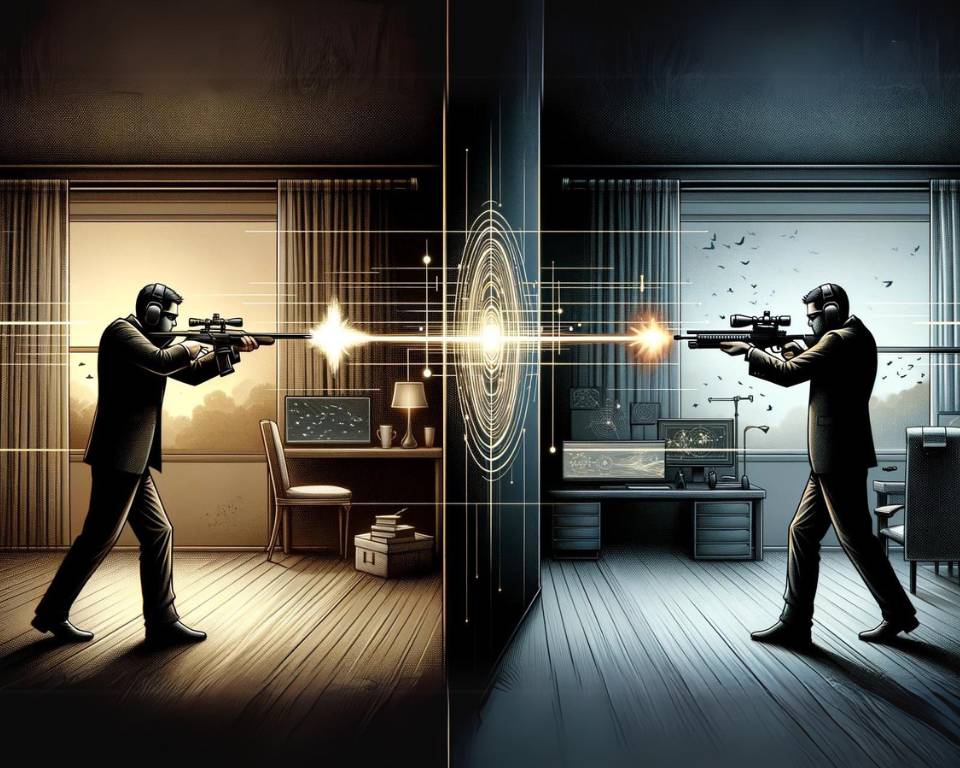
Accuracy and Range: Airguns vs. Airsoft Guns
When it comes to accuracy and range, airguns have a clear advantage over airsoft guns. This is primarily due to their heavier ammunition and higher power. Airguns are designed with precision in mind, allowing shooters to achieve consistently accurate shots.
Airguns offer:
- Greater accuracy: With their powerful propulsion systems and heavier projectiles, airguns can deliver impressive accuracy for target shooting, competitive sports, pest control, and small game hunting.
- Longer range: The combination of higher power and heavier ammunition allows airguns to shoot at longer distances compared to airsoft guns, making them suitable for outdoor activities where range is a crucial factor.
Airsoft guns, on the other hand, are primarily used for target practice, recreational skirmishes, and military simulations. They are not designed for long-range accuracy like airguns.
“Airguns are known for their accuracy and range, making them a popular choice among shooting enthusiasts and hunters. Whether you’re honing your skills at the range or taking aim at small game, airguns deliver the precision you need.”
With airguns, you have the versatility to:
- Engage in competitive shooting: Airguns are frequently used in various shooting competitions, where precision and accuracy are essential to achieve high scores.
- Perform pest control: Airguns offer the necessary power and precision to control pests effectively and responsibly.
- Partake in small game hunting: The accuracy and range of airguns make them suitable for hunting small game, providing an alternative to traditional firearms.
Cost: Airguns vs. Airsoft Guns
When it comes to comparing the cost of airguns and airsoft guns, several factors come into play. While airguns tend to be more expensive than airsoft guns, it’s important to consider the various features that contribute to the price difference.
The cost of airguns can vary depending on factors such as build quality, accuracy, range, and power. Higher-quality materials, advanced engineering, and improved performance drive up the price. Additionally, the size of the airgun, its power source, and the type of ammunition it uses can also affect the cost.
On the other hand, airsoft guns are generally more affordable due to their simpler construction and lower power. The use of plastic BBs instead of metal pellets and fewer advanced features contribute to the lower price point.
It’s worth noting that while airguns may have a higher upfront cost, their durability and longevity often make them a worthwhile investment in the long run. They are built to withstand heavy use and offer superior accuracy, making them suitable for competitive shooting and other precision-focused activities.
Ultimately, when deciding between airguns and airsoft guns, it’s essential to consider your shooting goals, budget, and the level of performance you desire. Whether you choose an airgun or an airsoft gun, both offer unique experiences and cater to different shooting preferences.
“Investing in a high-quality airgun can provide a shooting experience that goes beyond just recreation. The precision and power of airguns make them an excellent choice for serious enthusiasts and professionals.” – Expert Airgun Enthusiast
Cost Considerations:
- Manufacturer reputation and brand
- Materials used in construction
- Performance specifications
- Size and weight of the gun
- Power source (CO2, spring-piston, HPA, etc.)
- Ammunition type (BBs, pellets, etc.)
- Available accessories and attachments
When making a purchasing decision, it’s important to research and compare different models to find the best balance between cost and performance that suits your specific shooting needs.
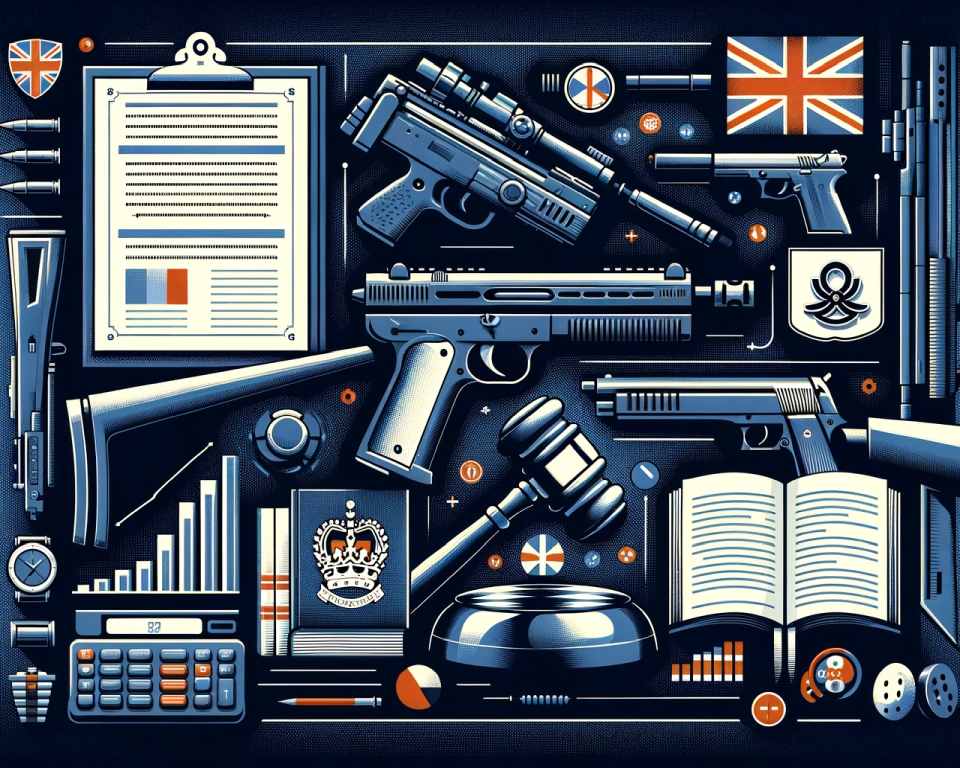
Rules and Regulations: Airgun and Airsoft Gun Ownership and Usage
In the United Kingdom, there are specific rules and regulations governing the ownership and usage of airguns and airsoft guns. Understanding these guidelines is essential for responsible ownership and safe enjoyment of these recreational firearms.
Airgun Ownership
Airgun rules and regulations vary depending on the constituent country within the UK. In Scotland and Northern Ireland, individuals who wish to own an airgun must obtain a license. However, in England, you can legally own an airgun without a license as long as it falls under specific power limits. It is important to note that airgun ownership is strictly limited to individuals who are 18 years old or above. Exceptions may apply for younger individuals under adult supervision, ensuring safe handling and usage.
Airsoft Gun Ownership
Airsoft gun rules and regulations, on the other hand, differ slightly from airgun ownership laws. In the UK, anyone who is at least 18 years old can purchase an airsoft gun without a license. However, there is one specific requirement for airsoft guns intended for use by children: they must be brightly colored and clearly distinguishable from real firearms. This ensures safety and prevents any potential confusion.
Remember, airsoft guns and airguns should always be treated as firearms, emphasizing the importance of responsible ownership, proper transportation, and safe usage.
When it comes to airgun and airsoft gun ownership, it is crucial to educate yourself on the specific laws and regulations in your constituent country. By doing so, you can ensure compliance with the requirements and enjoy these recreational firearms safely and responsibly.
Types of Recreational Guns
Recreational shooting encompasses a wide variety of guns, each tailored to different purposes and preferences. Let’s explore the diverse types of recreational guns available, including airsoft guns, airguns, BB guns, paintball guns, and pellet guns.
Airsoft Guns
Airsoft guns are popular among enthusiasts for their realistic appearance and gameplay. These guns use compressed air or gas to propel plastic pellets called BBs. Airsoft guns are commonly used for competitive team-based games, military simulations, and target shooting. They offer a safe and thrilling recreational experience.
Airguns
Airguns, including air pistols and air rifles, utilize compressed air to shoot projectiles. These guns are prized for their accuracy, power, and versatility. Airguns find applications in various recreational activities such as target shooting, competitive sports, pest control, and small game hunting. Players enjoy the challenge and precision offered by airguns in their shooting pursuits.
BB Guns
BB guns are similar to airguns but typically shoot small balls made of steel or lead. They are used for recreational shooting, plinking, and informal target practice. BB guns offer an affordable and accessible option for beginners and those interested in casual shooting activities.
Paintball Guns
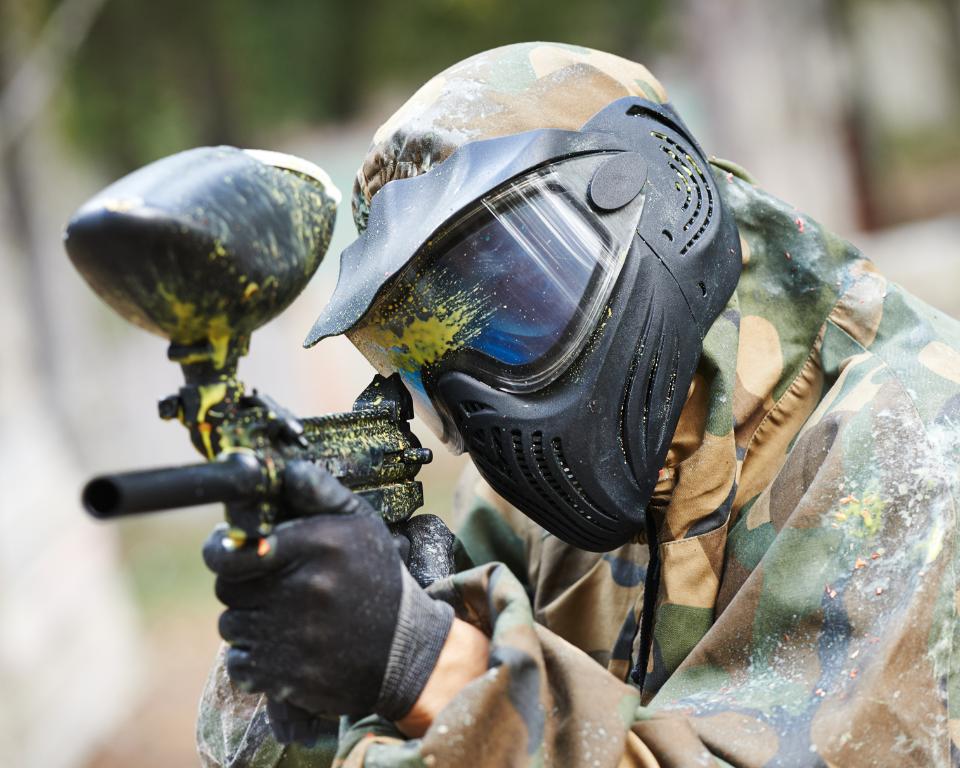
Paintball guns, also known as markers, propel paint-filled gelatin capsules using carbon dioxide or compressed air. Paintball is a popular recreational activity that involves team-based games and strategy. These guns provide an exciting and immersive experience for players of all skill levels.
Pellet Guns
Pellet guns are specifically designed to shoot non-spherical projectiles called pellets. These guns are commonly used for target shooting, plinking, and small game hunting. Pellet guns offer accuracy, consistency, and a wide variety of ammunition choices, allowing shooters to customize their experience.
Each type of recreational gun brings its own advantages and applications, catering to the diverse interests of shooting enthusiasts. Whether you seek the realism and team dynamics of airsoft, the precision and power of airguns, or the thrill of paintball battles, there’s a recreational gun to suit your passion.
The Importance of Precision over Accuracy in Shooting
In shooting, precision plays a crucial role and holds greater significance than accuracy. While accuracy refers to the closeness of a shot to the intended target, precision goes beyond a single shot and focuses on the consistency and predictability of multiple shots.
Having precise shots is essential for achieving repeatable and adjustable performance, allowing shooters to compensate for any deviations and improve their overall skills. Precision enables shooters to analyze their shooting patterns, identify areas for improvement, and make adjustments accordingly.
“Precision is the key to mastery in shooting. It allows us to understand and control our actions, leading to improved performance and proficiency.”
In shooting sports, whether it’s target shooting, competitive shooting, or practical shooting, precision is what sets apart the skilled shooters from the rest. It enables shooters to achieve consistency in their shots, regardless of external factors such as target distance, wind conditions, or shooter position.
By honing their precision, shooters can develop a deep understanding of their equipment, shooting techniques, and their own capabilities. This understanding empowers them to make informed decisions and adjustments, leading to higher accuracy in the long run.
The Impact of Precision in Competitive Shooting
In competitive shooting disciplines like precision pistol shooting, precision long-range shooting, and precision air rifle shooting, the importance of precision cannot be overstated. These disciplines require shooters to consistently hit small targets, often from varying distances and positions.
With precise shots, competitors can evaluate their performance, identify strengths and weaknesses, and refine their techniques to achieve optimal results. Precision becomes the foundation on which shooters build their shooting skills and improve their overall scores.
The Role of Practice in Developing Precision
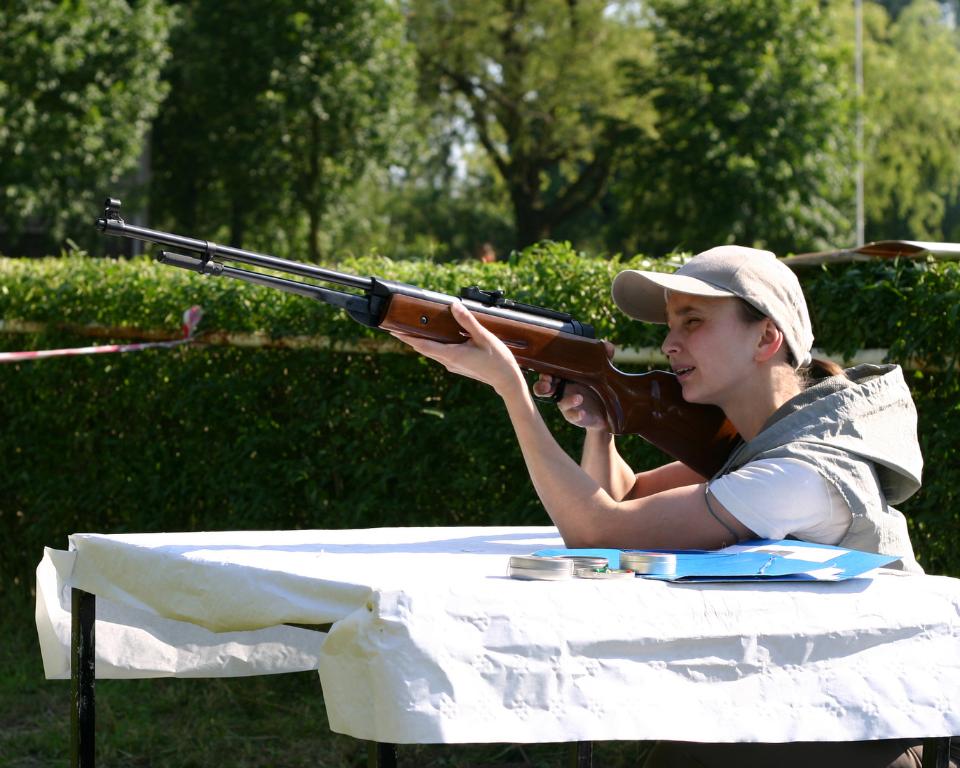
Developing precision in shooting requires dedicated practice, focus, and attention to detail. Through consistent practice, shooters can refine their grip, stance, trigger control, and sight alignment, ensuring that every shot is delivered with precision.
It’s essential to establish a training routine that emphasizes precision, incorporating drills and exercises that challenge shooters to hit specific targets consistently. By practicing under varying conditions and simulated scenarios, shooters can further enhance their precision and adaptability.
The Impact of Precision on Shooting Performance
Precision has a direct impact on shooting performance. Shooters who prioritize precision in their training and shooting sessions can achieve higher levels of consistency, control, and confidence in their abilities. These attributes are invaluable in both recreational shooting and competitive shooting scenarios.
Furthermore, precision allows shooters to refine their shot placement, reduce the likelihood of errant shots, and maximize their overall efficiency. In practical shooting disciplines such as IPSC (International Practical Shooting Confederation) and USPSA (United States Practical Shooting Association), precision helps balance speed and accuracy, leading to higher scores and better match performance.
Therefore, when it comes to shooting, precision holds the key to unlocking one’s true potential. By focusing on precision and consistently striving for improvement, shooters can elevate their skills, achieve greater accuracy, and enjoy a more rewarding shooting experience.
Differentiating Precision and Accuracy in Shooting
In the world of shooting, precision and accuracy are two essential concepts that often get confused with one another. While they both play crucial roles in achieving shooting proficiency, they have distinct meanings and applications.
Precision refers to the consistency and closeness of multiple shots to each other. It measures how closely grouped the shots are on the target, regardless of their proximity to the intended bullseye. Precision allows shooters to assess and improve their shooting techniques, analyze shooting patterns, and make necessary adjustments. Consistency in shot placement is essential for developing predictable performance.
Accuracy, on the other hand, focuses on the closeness of each individual shot to the intended target or bullseye. It measures how effectively a shooter can hit the desired point on the target. While precision involves consistency, accuracy is concerned with hitting the mark precisely. Achieving accuracy requires a combination of precise aiming, proper technique, and understanding of external factors like wind, distance, and target dynamics.
To illustrate the difference, imagine a group of shots forming a tight cluster on the target but several inches away from the bullseye. This indicates high precision but low accuracy since the shots are consistently grouped but not hitting the desired point. Conversely, a shooter hitting the bullseye with each shot demonstrates both precision and accuracy.
It’s important to note that precision and accuracy are interdependent. Precision serves as the foundation for accuracy. By consistently placing shots close to each other, shooters can then fine-tune their aim and technique to achieve accuracy. Without precision, accuracy becomes unpredictable and difficult to achieve.
“Precision is the consistency in shot placement, while accuracy is the ability to hit the intended target precisely.”

Understanding the difference between precision and accuracy is vital for shooters to assess their skill development, identify areas for improvement, and enhance their overall performance. By practicing both precision and accuracy, shooters can refine their shooting abilities and achieve greater success in their shooting endeavors.
Key Takeaways:
- Precision measures the consistency and closeness of multiple shots to each other.
- Accuracy refers to hitting the intended target or bullseye precisely.
- Precision forms the foundation for achieving accuracy.
- Developing both precision and accuracy is crucial for shooters to excel in their shooting skills.
The Significance of Consistency in Shooting
In the world of shooting, consistency is paramount. It plays a vital role in achieving precision and overall success. Consistency allows us to place shots in the same spot consistently, which is crucial for predictable performance and the ability to make adjustments.
When it comes to shooting sports, such as airsoft and airgun competitions, consistency is especially important. A consistent shooting technique and consistent shot placement can greatly improve our performance and increase our chances of hitting the target accurately.
To develop consistency in shooting, practice is key. Regularly honing our skills and familiarizing ourselves with our chosen firearm or airgun helps us establish muscle memory and build a solid shooting foundation. Additionally, paying attention to detail and implementing proper technique ensures that we maintain consistent form and execution.
It’s also worth noting that consistency in shooting doesn’t stop at the physical aspect. Mental focus and concentration are equally important. By maintaining a calm and focused state of mind, we can achieve greater consistency in our shooting performance.
Consistency: The Path to Precision
Consistency and precision go hand in hand. When we consistently hit the same spot, it allows us to adjust and fine-tune our aim, leading to greater overall precision. Consistency helps us develop a deep understanding of our shooting capabilities and enables us to make the necessary adjustments to improve our accuracy.
“Consistency is the foundation of precision. By consistently placing shots in a tight grouping, we can then refine our aim and techniques to achieve the desired accuracy.” – Shooting Pro
As shooters, our goal is not just to hit the target but to hit it with precision. Whether it’s hitting a target in a competition, honing our skills for hunting, or simply improving our marksmanship, consistency is of utmost importance. It sets the stage for precise shooting and enhances our overall shooting experience.
The Benefits of Consistency in Shooting
Consistency provides several benefits to shooters. Firstly, it instills confidence. When we have confidence in our ability to consistently hit the target, we approach each shot with a positive mindset, allowing us to perform at our best.
Consistency also allows us to identify and rectify any issues or errors in our shooting technique. By analyzing our consistent shot placement, we can pinpoint areas for improvement and make the necessary adjustments for better performance.
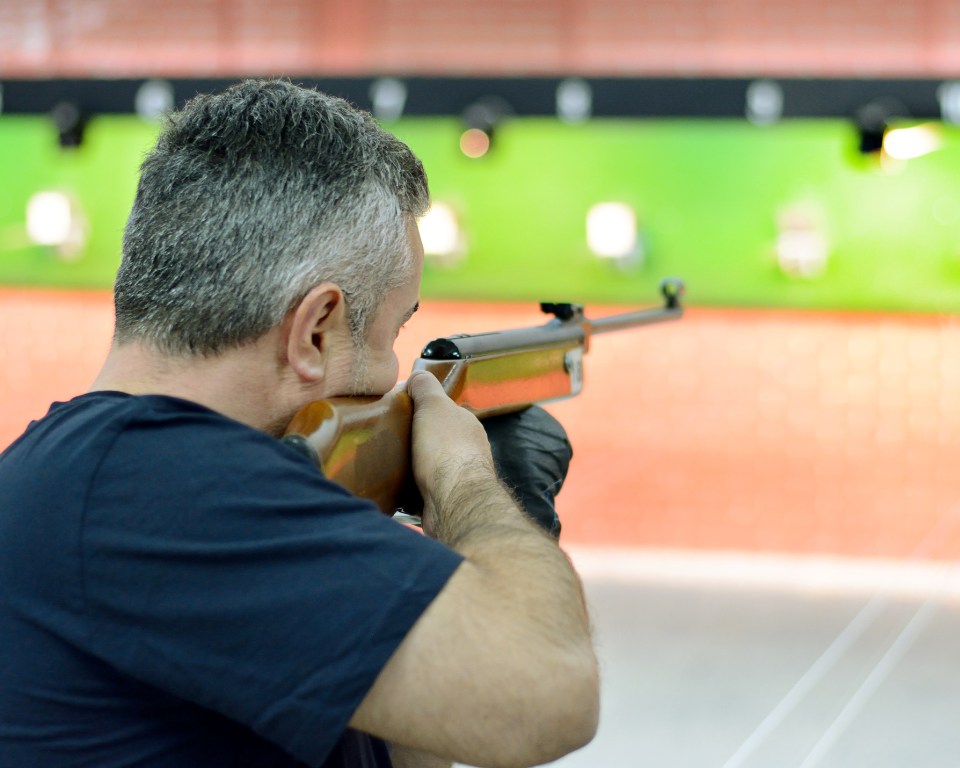
Furthermore, developing consistency in shooting helps us establish a solid foundation for more advanced skills. Once we have mastered the art of consistent shot placement, we can move on to refining our accuracy and exploring more complex shooting techniques.
- Consistency ensures predictable performance
- Consistency helps identify areas for improvement
- Consistency establishes a solid shooting foundation
Consistency in shooting is not just about hitting the target; it is a journey towards precision and mastery. By striving for consistency, we can elevate our shooting abilities and truly excel in our chosen shooting sports.
The Relationship between Precision and Accuracy in Firearms
In the world of firearms, there is a crucial relationship between precision and accuracy. While these terms are often used interchangeably, they have distinct meanings and play different roles in shooting sports and activities.
Precision can be understood as the foundation for achieving accuracy. It refers to the ability to consistently reproduce the same shot, with minimal variation in point of impact. In other words, precision is about developing a high level of skill and control to deliver shots that are consistent in terms of angle, velocity, and trajectory.
Shooting with precision requires a combination of concentration, technique, breath control, and trigger manipulation. It involves mastering the fundamentals, such as proper grip, stance, and sight alignment. By focusing on precision, shooters can develop a level of consistency and repeatability in their performance.
However, precision alone is not enough to guarantee hitting the target. This is where accuracy comes into play. Accuracy refers to the ability to deliver shots that are on target, regardless of how consistently they are placed. It involves factors such as marksmanship, sight adjustment, and external influences like wind, distance, and target characteristics.
While precision is the key factor that enables shooters to consistently hit their target in a controlled environment, accuracy takes into account real-world variables and challenges. Achieving accuracy requires adjusting the shots based on the observed results and making corrections to align them with the desired point of impact.
Precision provides the foundation, while accuracy delivers the result. Without precision, accuracy is elusive. Likewise, without accuracy, precision may not be meaningful.
The relationship between precision and accuracy is best understood as a continuous feedback loop. Shooters strive for precision through disciplined training and practice, which in turn allows them to adjust and fine-tune their shots for accuracy. This iterative process ensures that every shot is delivered with the utmost care and in alignment with the intended target.
In conclusion, precision and accuracy are inseparable components of effective shooting. Precision sets the stage for consistency, while accuracy translates that consistency into hitting the target. By understanding and appreciating the relationship between precision and accuracy, shooters can refine their skills and elevate their performance to the next level.
The Role of Precision in Airsoft and Airgun Shooting
When it comes to airsoft and airgun shooting, precision is paramount. Whether you’re engaging in competitive airsoft games or honing your skills in target shooting with airguns, the ability to consistently make accurate shots is crucial. Precision not only helps improve your overall performance but also allows you to adjust your aim and techniques to enhance your accuracy and shooting skills.
By focusing on precision, you develop the ability to hit your target consistently and predictably. This level of consistency ensures that your shots are not just accurate, but that you can replicate them reliably. With each shot being precise, you’re able to make necessary adjustments and fine-tune your performance for optimal results.
Both airsoft and airgun shooting sports require shooters to have a deep understanding of precision. Whether you’re competing in a fast-paced airsoft game, where split-second decisions matter, or engaging in target shooting with airguns that demand precision for hitting small targets, the importance of precision cannot be overstated. It is the foundation upon which accuracy is built, and it forms the backbone of success in shooting sports.
So, whether you’re an airsoft enthusiast or an airgun shooter, remember that precision is the key to unlocking your true potential. By striving for precision in your every shot, you’ll not only improve your accuracy but also elevate your overall performance in the thrilling world of shooting sports.

